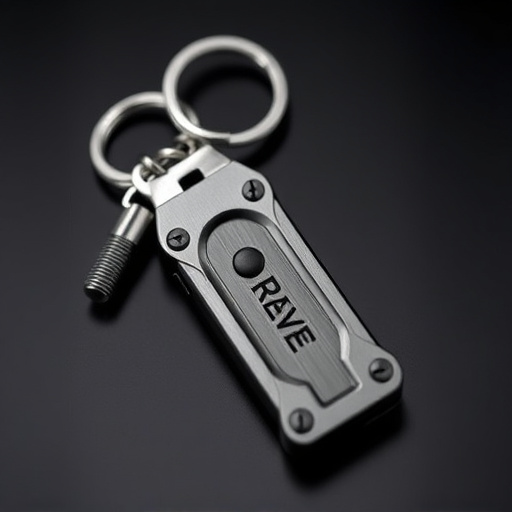Choosing robust materials like high-grade steel or aluminum for an impact-resistant keychain weapon ensures strength and durability to withstand blunt force impacts. Textured grips enhance control, while specialized impact-absorbing cores made of rubber or foam reduce injury risk. These features transform the keychain into a functional self-defense tool, balancing effectiveness with portability for personal safety in unexpected situations.
In today’s unpredictable world, self-defense is paramount. Introducing the impact-resistant keychain weapon—a compact, discreet solution for personal safety. This article delves into the design considerations, materials, and advantages of these innovative defensive tools. We explore how certain keychains can withstand blunt force, providing peace of mind in high-risk situations. From durable materials to their tactical benefits, we guide you through choosing the perfect self-defense accessory, ensuring you’re prepared for any unexpected challenges.
- Impact Resistant Keychain Design Considerations
- Materials Used for Blunt Force Protection
- Advantages of a Keychain Weapon
- Choosing the Best Defense Tool for You
Impact Resistant Keychain Design Considerations
When designing an impact-resistant keychain with blunt force tips as a potential self-defense weapon, several crucial considerations come into play. The primary focus should be on selecting robust materials that can endure significant force and absorb shock effectively. High-quality metals like steel or aluminum alloys are excellent choices due to their strength and durability. These materials can withstand impact and maintain their structural integrity, ensuring the keychain remains functional even after multiple strikes.
Additionally, the design should incorporate features like a textured grip or a specialized impact-absorbing core. A textured surface enhances control during use, preventing accidental slips or misfires. An internal core made from materials like rubber or high-density foam can help dissipate force and reduce the risk of injury to both the user and potential targets. These design elements contribute to making the keychain not just a stylish accessory but also a reliable tool for self-defense in unexpected situations.
Materials Used for Blunt Force Protection
When it comes to crafting an impact-resistant keychain that doubles as a blunt force protection weapon, the choice of materials is paramount. High-quality, robust metals like stainless steel and titanium are often favored for their exceptional strength and durability. These metals can withstand significant force, making them ideal for creating a sturdy framework that protects against sudden impacts.
The specific grade and treatment of these metal alloys play a crucial role in enhancing the keychain’s impact resistance. For instance, military-grade stainless steel or titanium alloys offer superior hardness and flexibility, ensuring the keychain can absorb and distribute forces effectively during a potential assault. Additionally, certain materials like Kevlar, known for its exceptional ballistics resistance, can be integrated into the design to further bolster protection against blunt force trauma.
Advantages of a Keychain Weapon
A protection keychain with blunt force tips offers several advantages as a personal defense tool. Firstly, its compact size makes it easy to carry everywhere—in your pocket, bag, or even attached to your keyring. This accessibility ensures you’re always prepared in case of an unexpected encounter.
In terms of impact resistant keychain weapons, materials play a crucial role. High-quality, durable materials like steel or aluminum provide strength and sturdiness, enhancing the effectiveness of the blunt force tips. Such construction guarantees that the weapon can withstand frequent use without compromising its performance, making it a reliable companion for personal safety.
Choosing the Best Defense Tool for You
When selecting a protection keychain with blunt force capabilities, choosing the right materials is key. Look for impact-resistant components like high-quality metal or robust plastic to ensure durability and effectiveness during emergencies. The best defense tool should be lightweight yet sturdy, easily portable, and designed to minimize injury while maximizing stoppower.
Consider your personal needs and lifestyle when making your decision. Different materials offer varying levels of protection and ease of use. For instance, metal keychains may provide superior strength but could be heavier, while plastic options might be lighter and more discreet. Selecting a tool with a reliable locking mechanism and a comfortable grip is equally important for effective self-defense in unexpected situations.
In conclusion, an impact-resistant keychain with blunt force capabilities can be a valuable personal defense tool. By understanding the design considerations, materials, and advantages, you can make an informed decision on which defense option suits your needs best. When choosing a keychain weapon, prioritize quality materials for optimal protection, ensuring it’s both durable and effective in various situations.
